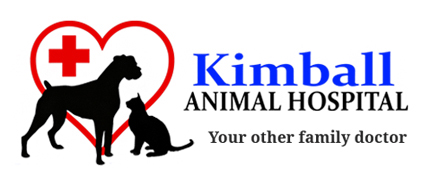Library
-
Lysosomal storage diseases are a rare collection of conditions that are inherited. Many of them are more prevalent in certain breeds and are seen in the first few months of life. Clinical signs vary depending on the type of disease, but commonly include failure to thrive, incoordination, vision loss, and seizure. Prognosis is usually poor for long-term survival.
-
There are several different types of malignant mammary tumors, with carcinomas being the most common. Carcinomas arise from epithelial (skin) cells, tubules of the mammary glands, or other cells found in the mammary chain. The size of the masses and their appearance may vary, but they are usually firm and nodular. Occasionally, the skin over the mass may ulcerate (open) and bleed, and the affected area may feel warm to the touch and become painful. Detecting and treating these tumors when they are small, and before spread has occurred, will provide your dog with the best chance for long-term control.
-
Glamorous and sweet, gentle and spirited, the Maltese has a long history as a treasured lap dog, sleeve dog, and close personal companion, especially to ladies at court. It is not hard to see why - the Maltese has the look of a tiny white angel and the manners to match.
-
A mammary tumor develops because of abnormal replication of the cells that make up the breast tissue. In cats, most mammary tumors (80-96%) are malignant. Sexually intact cats have a seven-fold increased risk for mammary tumors compared to spayed cats. Detecting and treating these tumors when they are small, and prior to metastasis, provides your cat with the best chance of long-term control. Surgery is by far the best treatment and, given the high metastatic rate in these tumors, chemotherapy is typically pursued afterward.
-
Feral cats are fiercely independent and survive (but may not thrive) without the help of humans. They avoid people and hide, back away, or flee when they spot humans. Lack of immunization, parasite control, adequate nutrition, and hygiene put feral cats at risk of many life-threatening problems. TNR (Trap, Neuter, and Release) programs are the hallmark of controlling feral cat populations.
-
Sleek and handsome in black-and-tan with his whip-like tail and his prick ears, the Manchester Terrier is one of the original terriers, and carries himself with all the majesty and confidence befitting an aristocrat. Even so, the Manchester is not above a good hard chase after a critter, and most will curl warmly into the laps of their favorite people so you can admire them up close, of course.
-
Mast cells are a type of white blood cell that plays a large role in allergic response through degranulation. Mast cell tumors (MCT) can occur in the skin, spleen, or gastrointestinal tract of cats. Their cause is unknown; however, many affected cats show a genetic mutation in the KIT protein involved in replication and cell division. Cutaneous MCTs most often appear as hard pale/white plaques or nodules, often around the head and they may be itchy. Splenic MCTs cause decreased appetite, weight loss, and vomiting. Intestinal MCTs may cause GI upset and bloody stools, and a mass may be palpable. Diagnosis is typically achieved via fine needle aspirate although histopathology can be used. Treatment usually requires surgical removal of the masses or the spleen. Sometimes, chemotherapy or radiation is needed.
-
Masticatory muscle myositis (MMM) is an immune system disorder in which the dog's immune system identifies the dog's own muscle tissue as foreign and attacks it.
-
Mastiffs are mellow and many are happy just watching family ballgames from the sidelines, cheering their kids on with a wag or a woof. Some, however, might happily join in to steal the ball or play a short game.
-
Mastitis is a term used to describe inflammation of a mammary gland (breast), most frequently seen in the postpartum period after a cat gives birth. In most cases, mastitis is caused by a bacterial infection. Trauma to the nipple or teat canal can allow bacteria to enter, traveling up into the mammary gland and creating a bacterial infection. Most cats with mastitis can be treated on an outpatient basis with oral antibiotics and pain medications, though severe cases may require hospitalization or surgery.

